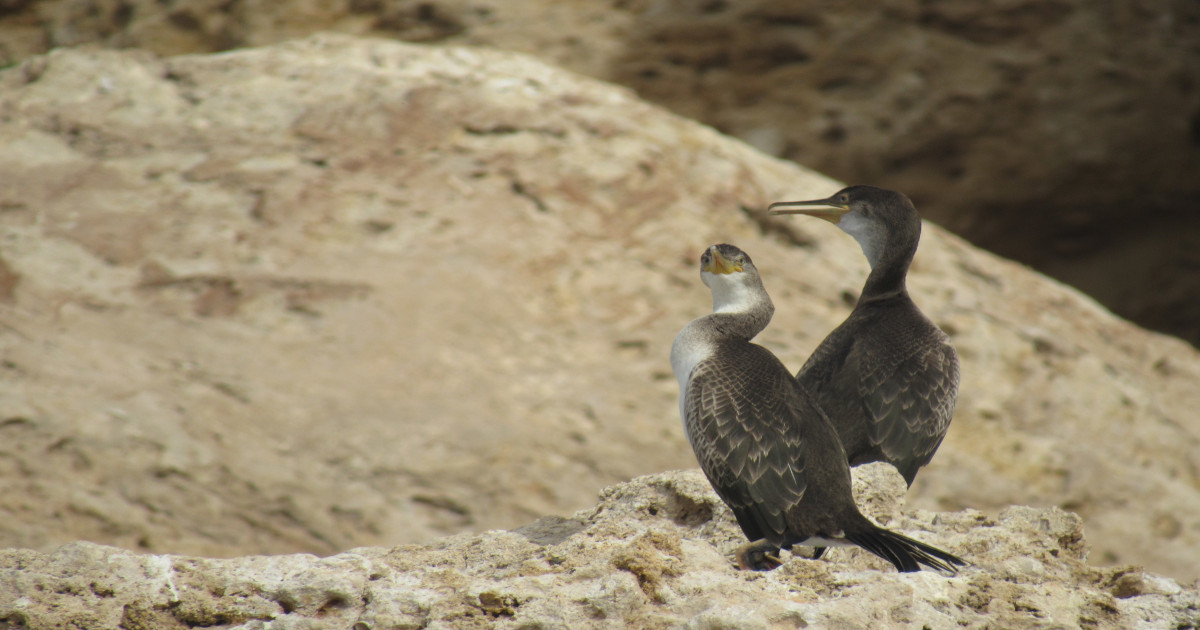Ecology, Diversity and Conservation of Seabirds
A special issue of Diversity (ISSN 1424-2818). This special issue belongs to the section "Animal Diversity".
Deadline for manuscript submissions: closed (29 February 2024) | Viewed by 42060

Special Issue Editors
Interests: animal ecology; fisheries-seabirds interactions; Procellariiformes; colonial seabirds; breeding ecology; remote sensing; marine top predators; biomonitoring; at-sea distribution of seabirds; bird population trends
Special Issues, Collections and Topics in MDPI journals
Interests: animal movement; habitat modelling; marine spatial planning; seabird ecology; seabird-fishery interactions
Special Issue Information
Dear Colleagues,
We are delighted to invite you to contribute to a Special Issue of the MDPI journal Diversity, an open access peer-reviewed journal, which has significantly contributed to the field since 2009. The title of this Special Issue is "Ecology, Diversity and Conservation of Seabirds" and it aims to signify some of the fundamental elements of seabird ecology, environmental change and the cumulative impacts of anthropogenic activities on seabirds and their habitats.
Seabirds constitute a diverse group of 434 species across 9 orders and 18 families, spending part or all of their lives interacting with the ocean, e.g., by foraging and migrating over it. These generally long-lived birds are often threatened both on land and at sea by numerous factors, including invasive mammalian predators, by-catch incidental mortality in fishery gears, marine pollution and accumulation of plastics, overfishing, and extreme large-scale climatic phenomena. Seabirds are increasingly recognized as important bioindicators of marine ecosystems that are useful in assessing environmental disturbance and the effects of climate change on the marine biota. Consequently, they are used as key species in conservation and management planning.
We encourage submissions of original research or review articles that cover a wide range of seabird species, as well as methods of conservation and management. The manuscripts may address population dynamics, at-sea distribution patterns, including foraging movements and migration; roles of seabirds in communities and food webs; fisheries-seabirds interactions including both negative (by-catch mortality) and positive (provision of discards) effects, evaluation of human-induced impacts (e.g., invasive species, organic and inorganic pollutants, light pollution), and the seabird population response to climate and related environmental change.
Topics of interest include (but are not limited to):
- Population dynamics and the relationship with the marine environment;
- Fisheries–seabirds interactions;
- At-sea distribution including foraging movements and migration;
- The role of seabirds in communities and food webs;
- Climate and weather effects on seabirds;
- Organic and inorganic pollution effects on seabirds;
- Human-induced impacts on seabirds;
- The use of seabirds as bioindicators of marine ecosystem;
- Seabird conservation.
Dr. Georgios Karris
Dr. Jorge M. Pereira
Guest Editors
Manuscript Submission Information
Manuscripts should be submitted online at www.mdpi.com by registering and logging in to this website. Once you are registered, click here to go to the submission form. Manuscripts can be submitted until the deadline. All submissions that pass pre-check are peer-reviewed. Accepted papers will be published continuously in the journal (as soon as accepted) and will be listed together on the special issue website. Research articles, review articles as well as short communications are invited. For planned papers, a title and short abstract (about 250 words) can be sent to the Editorial Office for assessment.
Submitted manuscripts should not have been published previously, nor be under consideration for publication elsewhere (except conference proceedings papers). All manuscripts are thoroughly refereed through a single-blind peer-review process. A guide for authors and other relevant information for submission of manuscripts is available on the Instructions for Authors page. Diversity is an international peer-reviewed open access monthly journal published by MDPI.
Please visit the Instructions for Authors page before submitting a manuscript. The Article Processing Charge (APC) for publication in this open access journal is 2100 CHF (Swiss Francs). Submitted papers should be well formatted and use good English. Authors may use MDPI's English editing service prior to publication or during author revisions.
Keywords
- seabird conservation
- marine ecosystem
- seabirds as bioindicators
- human-induced impacts
- pollution and climate effects
- food webs
- population dynamics
- fisheries–seabirds interactions
- migration
Benefits of Publishing in a Special Issue
- Ease of navigation: Grouping papers by topic helps scholars navigate broad scope journals more efficiently.
- Greater discoverability: Special Issues support the reach and impact of scientific research. Articles in Special Issues are more discoverable and cited more frequently.
- Expansion of research network: Special Issues facilitate connections among authors, fostering scientific collaborations.
- External promotion: Articles in Special Issues are often promoted through the journal's social media, increasing their visibility.
- Reprint: MDPI Books provides the opportunity to republish successful Special Issues in book format, both online and in print.
Further information on MDPI's Special Issue policies can be found here.






